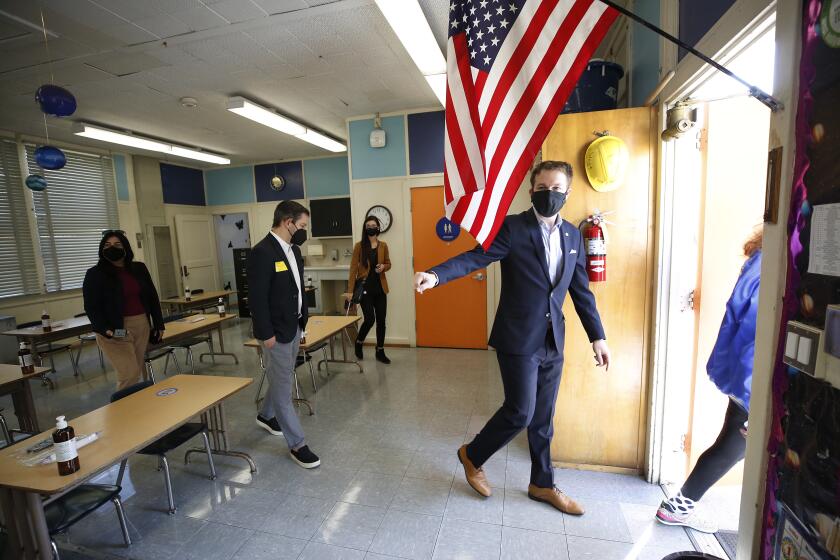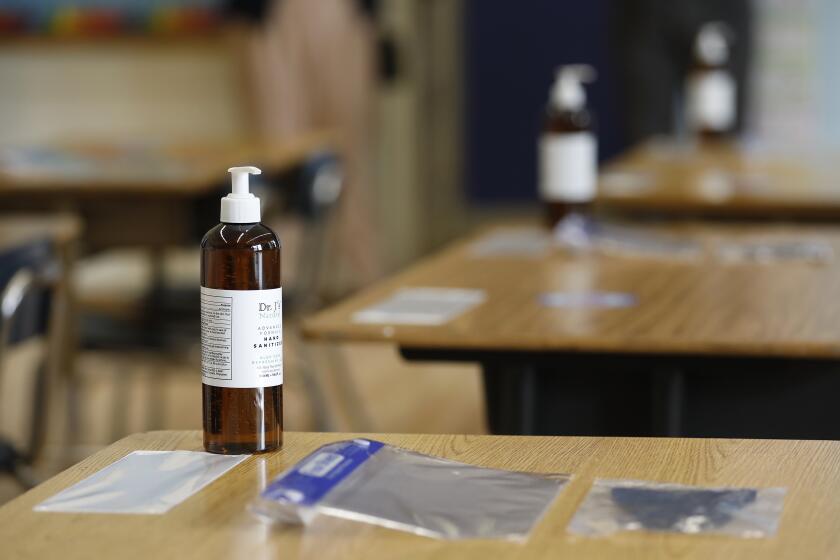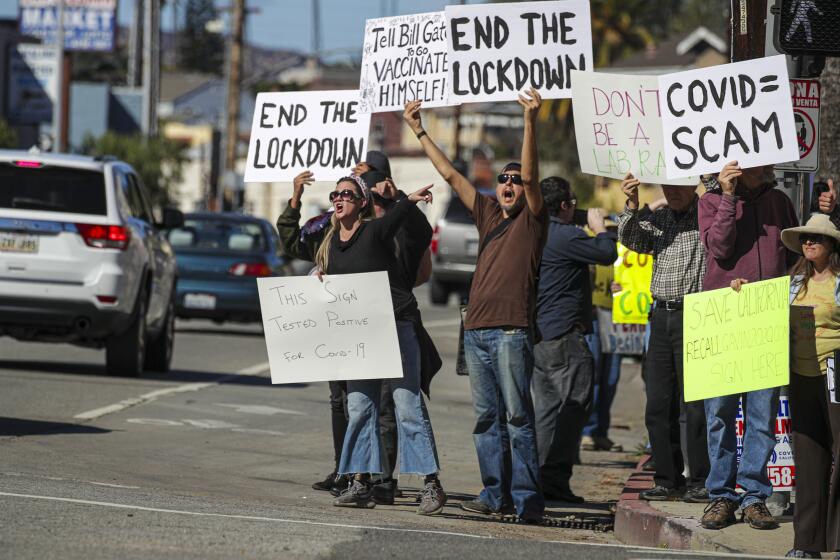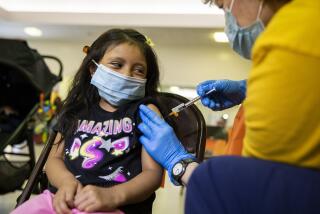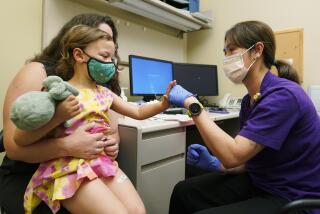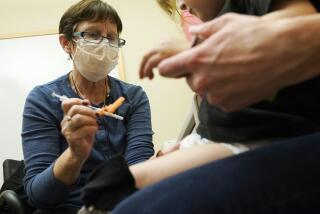Pfizer says its COVID-19 vaccine is highly effective in children ages 12 to 15
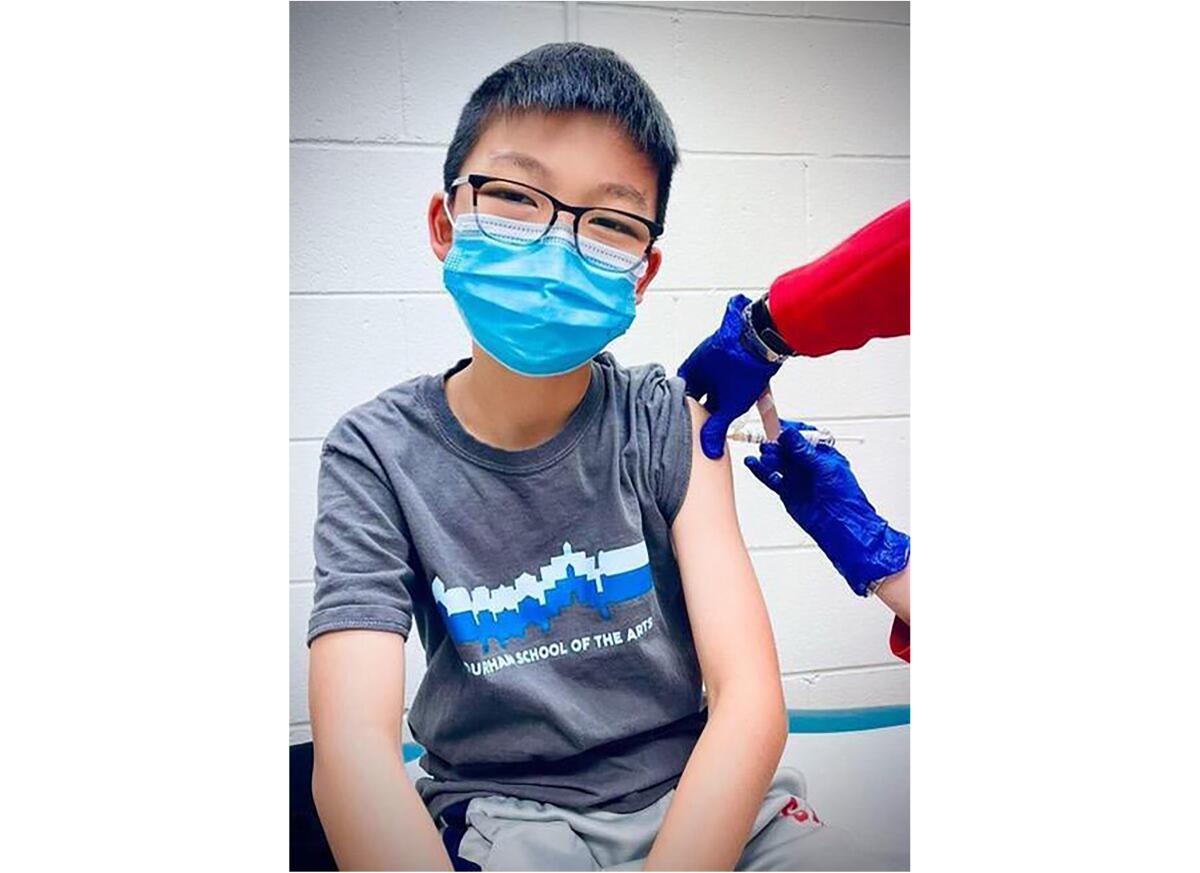
- Share via
Pfizer said Wednesday that its COVID-19 vaccine was safe and strongly protective in children as young as 12, a step toward possibly beginning shots in young teenagers before they head back to school in the fall.
Most COVID-19 vaccines being rolled out worldwide are for adults, who are at higher risk from the disease. Pfizer’s vaccine is authorized for ages 16 and older. But vaccinating children of all ages will be critical to stopping the pandemic — and helping schools, at least the upper grades, start to look a little more normal after months of disruption.
In a study of 2,260 U.S. volunteers ages 12 to 15, preliminary data showed there were no cases of COVID-19 among fully vaccinated adolescents, compared with 18 among those given dummy shots, Pfizer reported.
It’s a small study that hasn’t yet been published, so another important piece of evidence is how well the shots revved up the kids’ immune systems. Researchers reported high levels of virus-fighting antibodies, somewhat higher than were seen in studies of young adults.
Kids had side effects similar to those experienced by young adults, the company said. The main side effects are pain, fever, chills and fatigue, particularly after the second dose. The study will continue to track participants for two years for more information about long-term protection and safety.
Dr. Philip J. Landrigan, a pediatrician and epidemiologist at Boston College, said the results were encouraging.
“It’s hard to get kids to comply with masking and distancing, so something that gives them hard protection and takes them out of the mix of spreading the virus is all for the good,” said Landrigan, who was not involved in the study.
The theme of the moment is that L.A. schools are safe — but it’s hard to turn on a dime after months of a contrary message.
Pfizer and its German partner, BioNTech, plan in the coming weeks to ask the U.S. Food and Drug Administration and European regulators to allow emergency use of the shots for people as young as 12.
“We share the urgency to expand the use of our vaccine,” Pfizer Chief Executive Albert Bourla said in a statement. He expressed “the hope of starting to vaccinate this age group before the start of the next school year” in the U.S.
Pfizer isn’t the only company seeking to lower the age limit for its vaccine. Results also are expected by the middle of the year from a U.S. study of Moderna’s vaccine in 12- to 17-year-olds.
But in a sign that the findings were promising, the FDA already allowed both companies to begin U.S. studies in children 11 and younger, working their way down to recipients as young as 6 months old.
Parents say health concerns and an unsatisfactory hybrid learning plan are fueling their reluctance.
AstraZeneca last month began a study of its vaccine among 6- to 17-year-olds in Britain. Johnson & Johnson is planning its own pediatric studies. And in China, Sinovac recently announced that it had submitted preliminary data to Chinese regulators showing its vaccine to be safe in children as young as 3.
Though most COVID-19 vaccines being used globally were first tested in tens of thousands of adults, pediatric studies won’t need to be nearly as large.
One key question is the dosage: Pfizer gave the 12-and-older participants the same dose adults receive, while testing different doses in younger children.
It’s not clear how quickly the FDA would act on Pfizer’s request to allow vaccination starting at age 12. The agency has taken about three weeks to review and authorize each of the vaccines currently available for adults. That process included holding a public meeting of outside experts to review and vote on the safety and effectiveness of each shot.
The process for reviewing data in children could be shorter, given the FDA’s familiarity with the vaccines. An agency spokeswoman said the FDA had no information to share on how the review would work, including whether additional public meetings would be required.
Start your day right
Sign up for Essential California for the L.A. Times biggest news, features and recommendations in your inbox six days a week.
You may occasionally receive promotional content from the Los Angeles Times.
Another question is when the U.S. would have enough doses — and people to administer them — to let children start getting in line for vaccinations.
Supplies are set to increase steadily over the spring and summer, at the same time that states are opening vaccinations to younger, healthier adults who until now haven’t had a turn.
Children represent about 13% of COVID-19 cases documented in the U.S. Though children are far less likely than adults to get seriously ill, at least 268 have died of the disease in the U.S. and more than 13,500 have been hospitalized, according to a tally by the American Academy of Pediatrics. That’s more than die of the flu in an average year.
Additionally, a small number have developed a serious inflammatory condition linked to the coronavirus.
More than one in four Republicans said they would “definitely not” get the vaccine, and 13% said “probably not.”
Caleb Chung, who turns 13 this week, agreed to volunteer after his father, a Duke University pediatrician, presented the option. He doesn’t know if he received the vaccine or a placebo.
“Usually I’m just at home doing online school and there’s not much I can really do to fight back against the virus,” Caleb said in a recent interview. The study “was really somewhere that I could actually help out.”
His father, Dr. Richard Chung, said he’s proud of his son and all the other children volunteering for the needle pricks, blood tests and other tasks a study entails.
“We need kids to do these trials so that kids can get protected. Adults can’t do that for them,” Chung said.
More to Read
Sign up for Essential California
The most important California stories and recommendations in your inbox every morning.
You may occasionally receive promotional content from the Los Angeles Times.
